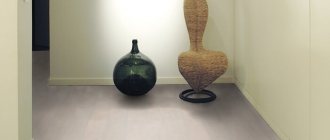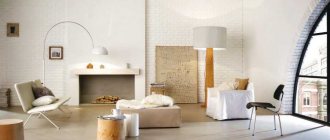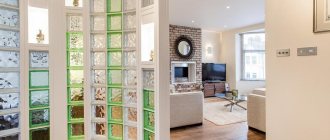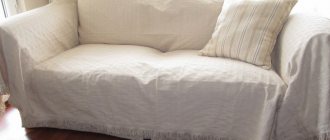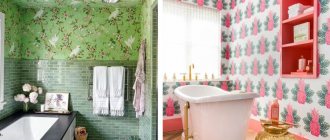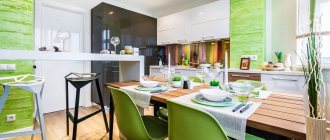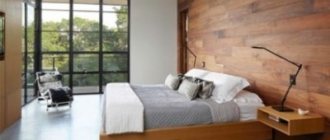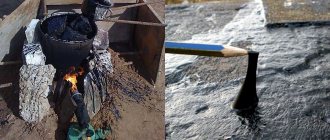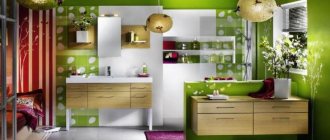Natural wood with its unique texture and cozy warm tones has long been used in Russia for floor and wall decoration. Over the past 15 years, products made from its Mediterranean “relative” - cork - have been gaining popularity among domestic buyers. In particular, cork flooring is gaining recognition among the masses not only due to its environmental component, but also due to the combination of operational properties of the material.
Description and features
In the manufacture of cork flooring, unique natural raw materials are used. Plants, namely cork oaks, grow mainly in Europe. The largest plantations (up to 33% of the world's reserves), well-established production are located in Portugal, as well as in Spain, the south of France, and Switzerland. Trees in some countries are protected by the authorities from unauthorized logging and are recognized as a state property.
Oak trees for processing must be 25 - 30 years old, then the trees will be able to restore the coating. The work of removing bark is carried out exclusively by hand; these are masterly manipulations of masters that do not harm the trees. Re-processing of trunks is possible after 8-9 years. Thus, with the right approach, raw materials are renewed.
Cork floor in the interior
Natural material is processed: crushed, granules heated in an oven, pressed. The result is a unique texture of cork sheets, similar to honeycombs. The mass called “suberin” contains crushed bark and air capsules. Increasing the additional height of the sheet increases the strength of the material. Varieties for decorative and other properties are obtained through many methods of further processing.
Cork flooring blends harmoniously with any style and does not lead to disappointment. The material retains its attractiveness and properties for 18 - 20 years. Doctors recommend sitting on a cork surface to get a healing effect on the skeletal and nervous system.
The eco-friendly coating retains heat and pleases with its original patterns. The top layer of veneer attracts with natural colors, conveys any pictures: imitates the pattern of stone, tiles, wood structure, pictures for children. Exclusive patterns and images are created using photo printing.
This is interesting: Pantry design: 6 ideas for organizing space (52 photos)
What it is?
Cork flooring is an environmentally friendly material, for the production of which the top layer of cork oak bark is used. This is a unique natural raw material: cork oak groves are found only in Europe. The method of removing the bark has non-standard specifics. The process requires exclusively manual labor. The task is carried out by virtuoso masters: careful and targeted actions are required to separate the top layer of bark from its mass, without causing harm to the tree itself.
Only thirty-year-old oaks (not younger) are used as donor trees. If the top layer is carefully cut off using technology, the bark continues to grow, and in 6 years it will replenish its reserves for a new portion of material. The natural harvest obtained from the tree is processed into cork slabs. They are the basis for creating a new floor.
The environmental friendliness of the slabs is guaranteed by their production. The bark is crushed and passed through heating in ovens for special processing. Then the resulting mass is compressed. Under pressure, the particles of wood cork are combined, creating a unique texture that looks like a honeycomb.
This is a fairly strong substance impregnated with air bubbles (suberin). To make the cork flooring material stronger and more practical, a second layer of suberin is added during production. Making a cork floor is an interesting design solution for decorating an apartment or house.
Natural cork has a beneficial effect on the human musculoskeletal system and nervous system.
Subtleties of production of cork covering for walls
Cork oak bark is used to make wallpaper. It is grown on special plantations in the western regions of the Mediterranean basin solely for the production of cork.
The bark of this evergreen plant is incredibly light and elastic, which allows products made from it to quickly recover after strong compression. It does not transmit sound well, but retains heat well. Such unique qualities have proven to be in great demand in the production of finishing materials.
A panel of cork wallpaper is a color accent in a bright interior
To produce wallpaper, the bark is crushed and pressed at high temperatures. The resin released at the same time firmly glues small particles into a single whole. As a result, it turns out. For the production of wallpaper, the bark is crushed and pressed at high temperatures.
Cork wallpaper is an absolutely natural and environmentally friendly material.
In the process of manufacturing decorative cork panels for walls, a special backing is often used. It gives the wallpaper strength.
Characteristics and dimensions
The plant material has excellent characteristics. In a honeycomb structure, each cell is an insulated chamber with walls that are resistant to the penetration of moisture and gases. Cork includes 90% air, the rest of the material is organic acids, which impart elasticity, strength, and moisture resistance.
The specific gravity of cork is comparable to the rarest balsa plant. In the old days, people appreciated the value of balsa wood, from which masts for ships were made, which provided waterproofness and protection from rotting.
Cork in roll
Interestingly, different types of cork floors hardly differ in properties:
- hypoallergenic;
- natural purity, harmlessness;
- high level of sound absorption;
- low thermal conductivity.
The best performance is found in class 33 cork laminate, which is explained by the multi-layer manufacturing technology:
- for balancing;
- for shock absorption, moisture protection;
- for an attractive surface.
The high-tech cork coating cannot be damaged by fallen objects or animal claws. Traces from furniture legs do not leave dents for a long time, the elastic surface is straightened.
Square or rectangular sheets (300 x 300 mm, 450 x 450 mm or 600 x 300, 450 x 150 mm) allow you to combine designs and create various patterns and ornaments. The interlocking cork floor consists of slabs 900 x 185 mm.
Cork does not attract dust, odors, or fumes. Cleaning with a vacuum cleaner or wiping with a damp cloth is sufficient. Washing liquids should not contain chemical solvents that threaten the texture and color of the coating.
What is good and what is bad about cork flooring
The cork floor has excellent springiness and is not slippery even with a coating for protection. “Plays” the load perfectly, including systematic alternating loads. Provides good heat and sound insulation. Completely environmentally friendly and not harmful: over the entire long history of using cork, no indicators of its impact on health have been noted.
But there are also serious disadvantages of cork floors. In addition to the high cost, it is fragile and quite difficult to lay on the adhesive mixture. Without skillful hands and an accurate eye, it is better not to take on an adhesive cork floor.
Further, the temperature increase is large, even for a tree. Also, cork swells greatly if the water has dissolved organic matter. As a result, the cork perfectly absorbs and firmly holds the aroma and color of the impurity. Maybe you have an ancient wine cork lying around somewhere, try to return it to its cylindrical shape, remove the color and aroma from the part that was in the bottle.
As a rule stated above, cork flooring is short-lived in different rooms with varying temperatures: due to thermal deformation, the cork will soon begin to break. And therefore, the answer to the question whether it is possible to lay cork flooring in the kitchen, balcony and hallway: only laminated cork parquet with a coating for protection, and even then it will not be much better.
As for the bathroom and bathroom, there is a definite no for cork flooring. Even if you and your guests use the services completely carefully during the most riotous fun, all the same, due to temperature fluctuations and moisture, small cracks will soon appear in the cork covering, through which moisture will pass, and then peeling, very often in hidden places: under the baseboard or under the bathtub where water vapor stagnates.
Cork does not have disinfectant properties; it is a biologically neutral material. And therefore, if you find and open such a “bump,” a nasty-looking mucus will be revealed under it, the contents of which, under a microscope, immediately make a biologist who is not indifferent to his work faint.
Where are cork floors good?
But still, there are types of rooms where cork floors are highly recommended, and others where they
absolutely suitable:
- Children's room. Here you can lay any floor made of cork; if the funds exist, it is better to use solid veneer. First of all, the baby will always be warm. Second, a flopped tomboy won’t ruin anything for himself. Third, walking barefoot through a traffic jam provides a somewhat irrational, but beneficially influencing the psyche and development of the mind, a feeling of a living connection with nature.
- The bedroom is for the same reason as in the nursery.
- Office for work. In addition, the cork perfectly muffles sounds without creating deadening silence at the same time.
- Living room. Here it is better to use laminated cork parquet, as in various other frequently visited rooms. Cork flooring, even with ideal care, does not stand out for its longevity.
Kinds
Coatings from natural raw materials are made in the form of:
- slabs - sheet thickness 4 - 6 mm, thin plates are best placed on a plank base, which should be level. Adhesive cork flooring is the most harmless, waterproof, suitable for bathrooms and kitchens;
- parquet - slabs similar to laminate, connected with a lock. The cork layer is glued to the MDF base;
- rolls - the required footage is purchased to create a substrate. Cork flooring under linoleum compensates for defects in the base, gives elastic softness, and insulates the room. For the technical layer, the so-called agglomerate, or production residues, is used. Cork underlay on the floor is reliable protection from cold and noise.
Adhesive panels are more flexible. Just like interlocking sheets, sheets for gluing have a complex structure of cork veneer, pressed mass, and auxiliary materials. A novelty in modern finishing is a liquid coating obtained by conventional painting.
Cork floor in the living room
After drying, it becomes a porous surface and looks stylish. An option for applying liquid is spraying performed with a compressor. It is better to entrust the application process to professionals. Types of colors depend on the functional characteristics of the coating:
- beige shades visually expand the space;
- light color emphasizes purity;
- textures with imitation sand, pebbles are suitable for design delights;
- color photo printing changes the perception of space and adds brightness to the coating;
- stylization with natural texture suits classic interiors.
Types of cork coverings from various manufacturers are associated with technology and fashion trends. Thus, Italian cork is denser (up to 12 mm), the design pattern is worked out manually.
In Switzerland, with a standard thickness of 4 - 6 mm, craftsmen strive to improve the wear resistance of the material. Thus, cork flooring is used even in public institutions. Corkstyle cork flooring is available in a wide range of interlocking and adhesive boards.
Types of cork floors
Cork floor tiles are cut from solid layers or pressed from glued cork chips. Solid tiles are expensive and rare. In Russian stores they can only be purchased upon order.
A common option is tiles in which the base is pressed from crumbs, and veneer is glued on top - a thin layer of solid cork. In terms of strength and wear resistance, tiles made from crumbs are no worse than solid ones. They are cheaper because the production uses resins that are considered unsafe for health. Prices - from 700 rub./m2.
Tiles are laid with glue
or using
locking connections
. Interlocking and adhesive tiles are constructed differently. Their areas of application also vary.
Base of interlocking tiles
— HDF wood board of high density. Grooves and tenons are cut into it, through which the tiles are connected to each other. A lining layer of cheap technical cork is glued under the slab. A high-quality cork is glued on top and covered with a protective layer of varnish or wax. The number of varnish layers reaches six.
The interlocking tiles are not glued to the base. The sheets connected to each other lie freely on the surface of the subfloor, which is why this installation method is called floating.
Interlocking tiles are easy to install. The dies are connected to each other by snapping locks - the result is quick and high quality. But at the same time, the requirements for the evenness of the base are high. The smallest bumps and depressions will cause some tiles to be slightly higher than others. These flaws are especially noticeable in places where the tiles adjoin each other. To visually smooth out discrepancies, use tiles with chamfers - edges cut at an angle.
Uneven bases also cause locks to wear out faster. Over time, the tiles begin to creak and click when walked. To increase the service life of the floor, a 2 mm thick underlay is laid on the base. There is no need for it to be thicker - it will crumple on uneven surfaces, the dies will sag and will again creak.
Interlocking tiles are laid in dry rooms. In damp conditions, water may seep through the joints and the tiles will warp. The cost of laying interlocking tiles starts from 465 rubles/m2.
At the adhesive tile
no wood board. It is made of two cork layers - a cheap backing layer and a more expensive front layer. The front layer can be solid or made of crumbs.
The adhesive plug is produced in three types: without a protective coating, with pre-varnish (coated with a thin layer of varnish) and with full protection from several layers of varnish. The unprotected cork is either left as is or varnished. For maximum protection, apply three layers of varnish. Pre-varnished cork is coated with two layers of varnish.
Laying adhesive tiles is much more difficult than interlocking tiles. It’s better not for a beginner to take on such work - disadvantages are guaranteed. And they will inevitably affect you later: the tiles will warp, peel off, and gaps will appear between the sheets.
Properly laid adhesive tiles do not allow water to pass through. It can be installed in both dry and wet areas. The cost of work is from 675 rubles/m2.
Laying
In installation technology, one of the most important conditions is laying the cork floor on a level surface. A wooden, metal or concrete base or gypsum screed is suitable, which should be free of cracks and bumps.
General recommendations:
- after purchase, the material must be kept for about a day in the room where installation work is planned;
- if there is a pattern, you need to work in advance to adjust the pattern;
- Remains of glue and small debris should be removed immediately.
Laying different types of cork flooring has its own nuances.
Sheet covering
The process of gluing the plates must be carried out from the center to the walls. Determining the place to start working is easy with the help of threads if you stretch them along the diagonals of the room. After marking is completed, a thin layer of glue is applied first to the tile, then to the base. Further, according to the recommendations, you need to wait 20-40 minutes, and then connect the surfaces.
After gluing, the tiles are carefully tapped with a rubber hammer. It is more convenient to join sheets if you first bend the sheet in an arc and then press it to the base. When installing, maintain a 5 mm gap between the edge panels and the wall.
It is better to use moisture-resistant glue, especially for laying floors in wet rooms. Finally, 2-3 layers of varnish are applied to the coating, which protects it from damage and moisture.
Sheet cork covering
Castle coating
Laying does not require a strong connection to the base; if necessary, the floating floor can be disassembled. To improve the quality of the coating, use a substrate that protects against dampness and smoothes out unevenness.
The panels are installed from right to left. The ends are fixed at an angle of 30° to the laid sheet. It is recommended to start laying the second row with the panel located at the end of the first strip. A sealant is used to treat joints.
Interlocking cork covering
Technical substrate
Laying working cork requires maintaining 15 mm gaps between the wall and the tiles. It is allowed to use PVC film to protect the coating from moisture. The pieces are laid and secured with tape.
Technical cork backing
This is interesting: Console table: design and functionality (36 photos)
Cork covering options
To lay cork material on the floor, use adhesive, interlocking tiles or a roll version. Each option has its own characteristics and disadvantages.
Adhesive tiles resemble ceramic tiles in their design. The thickness of such tiles varies - from 3 to 7 mm. It comes in two shapes - square or rectangle. Before use, the floor in the room is covered with a special underlay material and cork tiles are glued on top of it. For this, special glue is used, so gaps and cracks do not form between the tiles. This coating can be used for artistic masonry and used in the kitchen, bathroom or other room where the air humidity level is high.
Since cork is a soft material, before laying it you will have to level the floor to hide all the flaws and unevenness on the surface.
As for the rolled material, it is laid according to the same principle as linoleum. Glue is applied to a flat floor surface and then the roll of material is laid out. The work must be carried out carefully and efficiently, since the glue sets instantly and it is impossible to move or remove the coating without damage. The most significant disadvantage of this coating is the difficulty in working with seams and gaps - making them invisible or somehow hiding them is quite difficult. Despite such a significant disadvantage and the high cost of the material itself, this coating option is the most popular.
Related article: Selecting laminate color for different rooms
An analogue of laminate is interlocking tiles or floating floors. This multi-layer coating has a solid bottom layer, a middle layer of compressed cork, and a real wood veneer placed on top. A floating floor does not need to be attached to the floor; it forms a single covering due to the adhesion of the slabs to each other using a special locking structure at the ends. The main advantage of this coating is ease of installation. But due to the lack of tightness at the joints and ends of the tiles, this coating is unstable to the influence of moisture. It is recommended to use it in the bedroom or living room, but not for the kitchen or bathroom.
Advantages and disadvantages
The main advantages of such floors include:
- strength and elasticity: after loading, the surface tends to return to its original state;
- natural, environmentally friendly, therefore do not cause allergies;
- exceptional insulating qualities: do not allow cold to pass through, feel warm to the touch;
- due to the structure they perfectly absorb unnecessary sounds;
- are not afraid of moisture and do not rot, which is why they are even suitable for the bathroom;
- The design of cork floors often becomes exclusive due to the variety of shades and textures.
Not without its drawbacks:
- do not withstand point impact: furniture legs require pads, and stiletto heels are best removed;
- sensitive to abrasive effects: harder particles (debris) are sometimes pressed in;
- natural, high-quality material is always expensive;
- It is recommended to invite a good specialist for installation.
If you recognize yourself in these questions, this article is for you! Let's start in order
Cork laminate is a multi-layer coating made according to all the rules for the production of laminate boards. During the production process of this coating, the principle of layer-by-layer application is maintained. Due to the similarity of the production process, all the characteristics of a laminate board are applicable to this coating.
* The figure shows the structure of cork laminate
In addition to cork laminate, there are other cork flooring options. All of them differ only in manufacturing technology. If you want to compare the quality of cork on different surfaces or between budget and premium models, you will not notice the difference, because the same raw materials are used in their production.
Where does cork come from and where does it live?
Cork oak is a perennial evergreen tree, introduced almost throughout the Mediterranean: Portugal, Spain, Italy, France, Morocco, etc. Its bark is considered a valuable raw material for the production of shoes, corks for sealing vessels, heat and sound insulating materials, as well as products for interior and exterior decoration of civil, commercial and public buildings.
The bark is removed every 10-12 years. Products from young trees over 25 years old are used for the production of cork chips, while smoother, without pronounced veining, raw materials from oak trees over 80-90 years old are suitable for the production of decorative coatings and crafts.
Cork tree bark.
The structure of the cork resembles a honeycomb filled with a mixture of oxygen and nitrogen. Thanks to this, bark products are characterized by a whole range of advantages:
- light weight;
- lower thermal conductivity and noise dissipation than wood;
- a kind of springiness;
- relative stability, due to which cork products treated with protective agents can be used in damp rooms;
- ability to restore shape;
- low level of water absorption;
- antistatic;
- a good coefficient of slip resistance, corresponding to approximately R10;
- ease of use.
Cork oak bark is a valuable, rare, and therefore expensive raw material. Therefore, manufacturers have developed ways to save money:
- Cutting veneer sheets from pieces of bark. These are layers no more than 1 mm thick, which are glued to a solid base made of HDF boards, chipboard, composite PVC, etc.
Cork veneer.
- Pressing cork chips. The bark is crushed, combined with thermosetting polymer compounds and goes through a heat-pressing stage. The resulting agglomerated blocks are cut into slabs of a given thickness and decorated in various ways: veneering, painting, varnishing, photo printing, etc.
Cork agglomerate from crumbs.
What is the difference between cork board and cork laminate:
| Technical specifications | Cork board | Cork laminate |
| Wear resistance of flooring | Low/High | Medium/High |
| Number of flooring layers | From 1 to 3 | From 3 to 6 |
| Resistance to mechanical and physical stress | Average | Medium/High |
| Material of manufacture | Agglomerate or veneer combined with agglomerated cork | Layers: Veneer or agglomerate, then a high-density base board, then a stabilizing layer of melamine paper |
| Areas of application | Residential and commercial buildings, as well as facilities with increased requirements (medical and preventive institutions, kindergartens, etc.) | Residential, shopping and entertainment, public premises |
| Climatic conditions | Interior finishing with temperature and humidity conditions acceptable for natural finishing materials | Interior finishing, use in non-residential and unheated, but insulated premises is allowed |
What is the structure of cork?
It is the internal structure of this material that determines all its useful properties, which are appreciated by designers and master builders.
Cork is mainly composed of cells filled with gas, due to which it has:
- elasticity;
- ease;
- elasticity;
- poor thermal conductivity;
- high soundproofing properties;
- ability to dampen vibrations;
- durability.
Cork properties
Cork is such a pleasant and practical material that a huge number of things are made from it and are used in many areas of modern industry.
The structure of the cork is porous. The most interesting thing is that the pores are not empty, but filled with harmless gas. It seems that nature itself made sure that people began to use it to arrange their lives. After all, such a natural structure has a lot of useful properties.
The most obvious of them are thermal insulation and sound insulation.
In the first case, this is an ideal flooring material. The cork floor does not need heating, because it itself is warm. In addition, it does not let in the cold from outside. Therefore, cork underfloor heating also allows you to save money intended for the screed heating system.
Secondly, thanks to the same honeycomb structure, cork has good soundproofing properties. It itself does not produce ringing sounds when exposed to it, and is also a good noise absorber.
A material becomes elastic when it contains pores. Therefore, cork on the floor is also pleasant precisely because of its shock-absorbing qualities. Unlike other floor coverings, this characteristic is truly unique for it. Navigating through it is pleasant, easy and useful. After all, this massages the musculoskeletal system.
Cork in the interior has other household advantages that are not obvious at first glance.
- Does not accumulate static electricity
- Does not absorb odors
- Not sensitive to household chemicals
- Cork flooring is non-slippery
- Unique floor design
- Cork does not support combustion
- Natural eco-friendly material
Expert advice
Some useful tips:
- While still in the store, make sure that the batch you are about to purchase has no chips, scratches, or other defects.
- Before installation, the interlocking cork floor is checked for consistency in pattern, shade, and texture, since tiles from different batches may differ.
- For installation in the bathroom, use waterproof glue for a floating floor, or hydro-based tiles made of PVC and quartz, which are not afraid of water and do not react to humidity.
- As the coating wears out, the varnish layer of a cork floor can be renewed. To do this, a small preliminary cleaning is done with the finest sandpaper, then polyurethane varnish is applied in two layers.
- Cork is a soft material, so the legs of heavy furniture, chairs, tables, and armchairs must be protected with special pads made of rubberized materials or felt.
- Floor heating is not installed together with cork flooring. The thermal insulation properties of cork make this technology useless. Cork floors do not conduct heat, but also do not allow cold to pass through.
- You can increase the service life of a cork floor by periodically coating it with varnish.
If you want to have warm, silent, comfortable floors at home, turn to cork flooring. The costs of the material will be covered by 100%. A wide range of prints and colors, high performance qualities will meet your expectations. Everyone who installs cork floors at home is no longer ready to give them up.
Cork on the floor - what is it like?
There are only two types of cork you can buy in a flooring store or hardware store. Design has nothing to do with it, it’s about the structure and method of installation. Structurally, this material is divided into two types: three-layer and single-layer.
Castle
In the first case, the coating basically contains the same board as used in laminate - HDF. It is on this that the Click locking system is milled. Thanks to it, installation is carried out using the “floating” method. A thin layer of cork is glued to the bottom of the base, which serves as a backing. And on top there is the same layer, but thicker and with decorative processing.
The surface is usually treated with wear-resistant varnish. In some cases, corundum and fine aluminum chips are added to it. This increases the degree of abrasion.
Decoration is done by painting, gluing or photo printing. Thanks to the latter method, manufacturers began to produce cork flooring that imitates various surfaces: wood, leather, stone. Before this, the design of cork was quite specific - plain, cellular, striped or speckled. Which was not always suitable for the interior.
Glue plug
The adhesive plug in the interior is visually no different. But the structure is much simpler. This is a single-layer material with a thickness of 4-6 mm and consists entirely of initial raw materials. It is installed by gluing to the base. For these purposes, special glue is used. The top of the material needs to be treated with varnish. According to the technology, two layers with sequential drying are sufficient.
Cork floor in the interior
The adhesive technology for laying flooring in the interior allows for installation without connecting joints throughout the entire area of the apartment. But an important feature of this installation is that the cork can also be installed in the bathroom in this way. You just need to make high-quality waterproofing of the base and thoroughly treat the surface and all joints of the cork sheets with waterproof varnish. Thus, it will be possible to create a warm, pleasant floor in the room.
The locking plug should be laid on a pre-leveled base with a waterproofing layer. It is allowed to lay 7-10 meters in a single sheet.
When using a cork in the interior, you should still adhere to certain rules.
- Do not place hot objects on the varnish surface: iron, frying pans and pots only after they have been removed from the heat.
- Spilled caustic liquids, including markers and felt-tip pens, should be cleaned up immediately.
- Protective felt stickers must be placed on the legs of all furniture that can be moved.
Features of cork coating
Some characteristic features of the coating are superior to more expensive materials that are used for flooring:
- Thermal conductivity. Cork has natural thermal insulation properties. When laying, such a floor covering does not need a “warm floor” system due to the fact that the material itself absorbs external heat very slowly. When you walk through a room with a tiled floor, you feel cold because the covering quickly absorbs your heat. And the thermal conductivity of cork is very low and when you come into contact with it you will feel warm.
- Soundproofing. Thanks to its cellular structure, the sound absorption coefficient of this material reaches 85%. This is an ideal option for those who love silence. No stomping, loud sounds from fallen objects, keys, or small items. Such floors are an excellent option for a home where a family with small children lives.
- Antistatic and hypoallergenic. Static electricity does not accumulate on the surface of the cork, so dust is not attracted to this floor covering. In addition, the structure of the cork material is such that it does not allow the formation of various fungi and mold, as well as the accumulation of various odors.
Related article: How to choose laminate flooring for each room
As for the negative qualities, the biggest disadvantage is the high price of the material per square meter. To cover the floor in a small kitchen or hallway, you will have to pay a considerable amount. In addition, the material is not resistant to other aggressive interventions.
- It is strictly not recommended to use rubberized furniture pads. The rubber leaves traces on the surface of the cork floor that are almost impossible to remove. Use felt material or the same cork.
- Mechanical instability. Due to its structure, the material is quite soft, and therefore has poor resistance to deformation under mechanical stress. The same wheels from a chair or the legs of chairs leave dents and scratches on the floor surface. To avoid this, all furniture will have to be equipped with special pads.
- Influence of moisture. The porous surface of the cork absorbs water quite quickly, as a result of which the material is subject to deformation. For this reason, using such flooring for a bathroom or kitchen without a protective coating is not recommended.
- Additional protection. Without additional treatment, the coating quickly loses its presentation and wears out. To protect the cork, special products are used - varnish or wax - to make the flooring more resistant to various mechanical influences. In addition, due to prolonged exposure to direct sunlight, the coating changes its color and becomes more faded.
Advantages and disadvantages
Cork flooring has many undeniable advantages. Despite the fact that its price is higher than that of common laminate, it is a profitable and useful material:
- Cork is environmentally friendly. The material itself, as well as the process of its production, is natural.
- The coating has high antistatic characteristics. The surface is not covered with dust, which is important for people prone to allergies.
- Cork does not release toxic substances when heated. Fungus does not form on it, so a cork floor would be appropriate in a bathroom.
- Valuable quality - high sound insulation. Cork covers dampen noise on the ceiling, walls and floor. If something falls on such a floor, the ringing and rumble is practically inaudible, which is why cork cladding is used in recording studios.
- Cork floors have good thermal conductivity. No one can deny themselves the pleasure of walking on such a floor barefoot. There is a feeling that a “warm floor” system is installed under the plug. The elastic cork seems to spring back when walking, reducing overall stress on the body.
- To install cork slabs or a package, no special skills are required. This is a fairly simple and inexpensive procedure.
- The cork is easy to clean. You can do wet cleaning or clean the surface with a vacuum cleaner.
- This is an extremely durable material that can last from 10 to 40 years. After assembly, the floor is ready for use.
- Cork coverings are not afraid of temperature changes; it is logical to lay them in dachas, balconies, verandas, and loggias.
- It has a high coefficient of friction, making it impossible to slip on such a floor.
Pros and cons of cork tiles
Not so long ago, cork was classified as an exotic coating, unsuitable and inaccessible for ordinary apartments. But now that the world has turned towards environmental friendliness, people are more likely to pay attention to traffic jams.
♥Note: photo gallery on the website “Board Flooring”
Tactilely pleasant, elastic material is recommended for people with diseases of the musculoskeletal system. The surface is not slippery, does not become electrified, and does not emit harmful substances into the atmosphere. In coated rooms, air circulates easily, freely, and remains fresh for a long time. When deciding to purchase, it is worth studying in more detail the characteristics, features, and capabilities of the material.
pros
Walking on the flooring is comfortable and pleasant. It is warm, which will be appreciated by those who are growing up or planning small children. The floor is easy to use, but this is not the only advantage; it looks aesthetically pleasing, presentable, and expensive.
High-quality cork has the unique ability to return to its original shape. Owners of apartments with such coating should not worry too much about small dents and minor scratches. Over time, they disappear on their own.
Cork coverings have many advantages:
- light weight;
- simple processing;
- soundproofing;
- air exchange;
- heat;
- elasticity;
- do not accumulate dust;
- hypoallergenic;
- environmentally friendly;
- non-flammable;
- prevent the formation of mold;
- good performance characteristics;
- resistance to damage.
♥See also the photo gallery on the website “Furniture set with a bathroom cabinet”
Cork is universal and works well in any room.
Minuses
Thin, soft cork covering is pressed under the weight of furniture, leaving dents from heels. There are other disadvantages that you need to be aware of to avoid unnecessary mistakes:
- Shoes with rubber soles and mats with latex backing can leave marks that cannot be removed.
- Although cork does not burn well, the glue and varnish with which it is coated are highly flammable.
- Difficulty in installation and installation.
- High price for material.
How is oak bark turned into flooring?
This is done in different ways. Or rather, the technology used is always similar, but there are differences in the quality of raw materials and costs. By the way, from the removed cork they make not only coverings for floors, but also for walls and ceilings too. So, the following options are possible:
- Solid veneer obtained from cork wood. This is the most expensive coverage. When using it in order to form one collection, selection is made according to the color and texture of individual floorboards.
- Agglomerate. This is pressure-pressed cork chips. It is sintered under high heat to produce a solid material. This is the cheapest option, since any, even the smallest fragments of cork are used.
- Combination of agglomerate + veneer. A price-compromise solution. In this material there are parts of veneer mixed with small pieces of cork.
A little more detail needs to be said about the agglomerate. Both the wear resistance and other mechanical properties of the two types of agglomerate from large and small crumbs do not differ. Externally, they are also poorly distinguishable. Since plasticizers are used to obtain such a material, it, of course, is significantly inferior to veneer in environmental matters.
Original interior solutions
To make the interior of a room original, use several types of flooring. Bold combinations of laminate and floating tiles, creating original patterns and contrasts, can be used to zone a living room or bedroom.
Cork material naturally varies in color and grain size, which can be used to create floor designs. The dark curly elements of the coarse-grained cork and the light, fine-grained base material will create a surprising contrast. This option can be used for a living room, the interior of which used dark wood furniture and light decorative elements.
The newest flooring option is photo-printed cork.
A thin layer with the texture of any natural material - marble, granite, wood and the like - is applied to a cork base. This layer is covered with three layers of protective varnish. The result is a floor covering with enhanced characteristics, more resistant to mechanical damage and moisture.
Related article: Dark laminate: combinations and disadvantages (38 photos)
